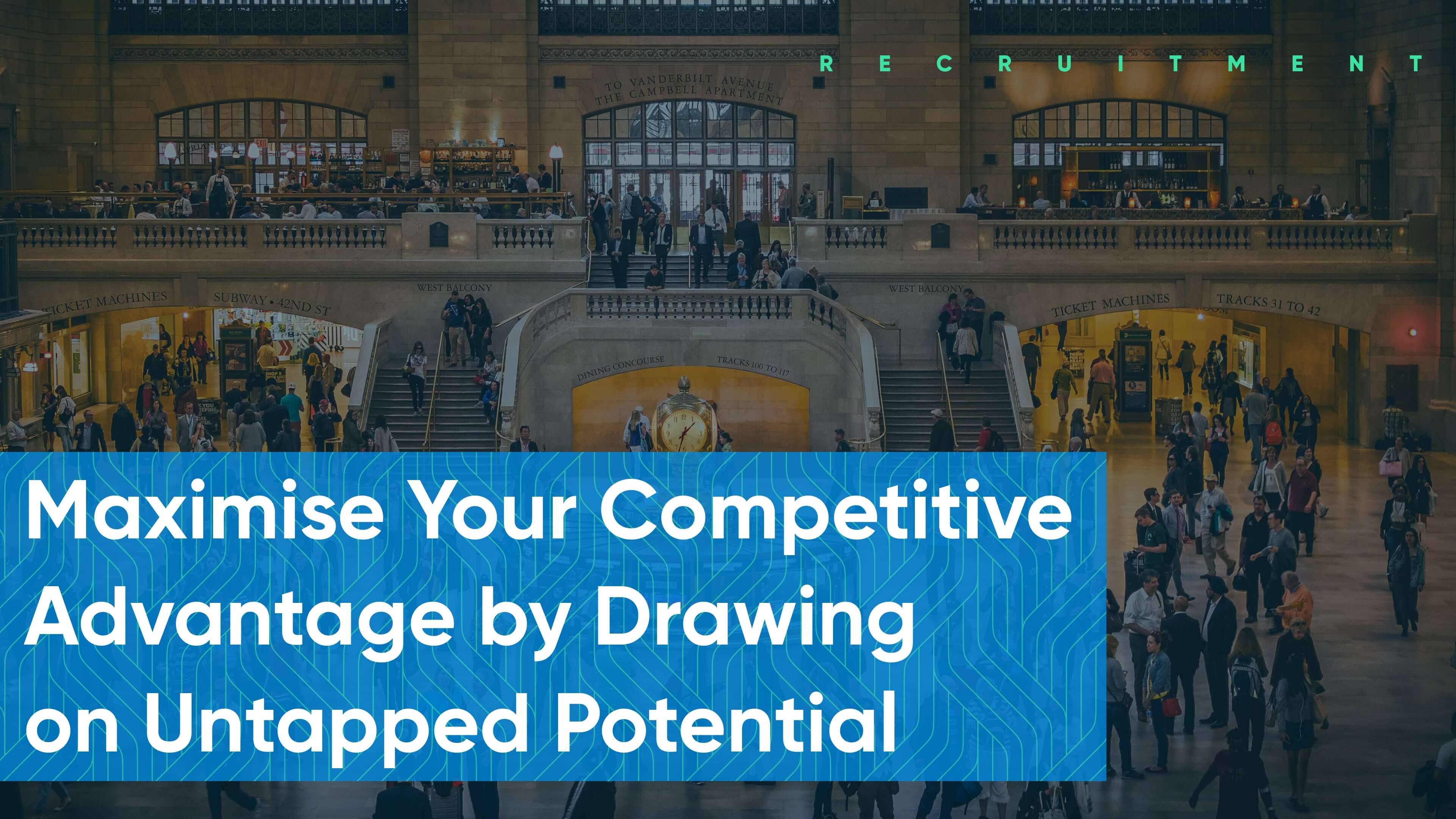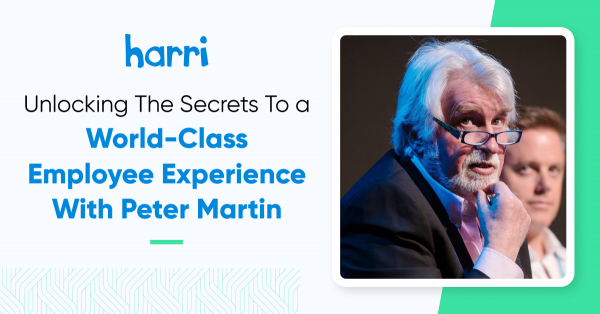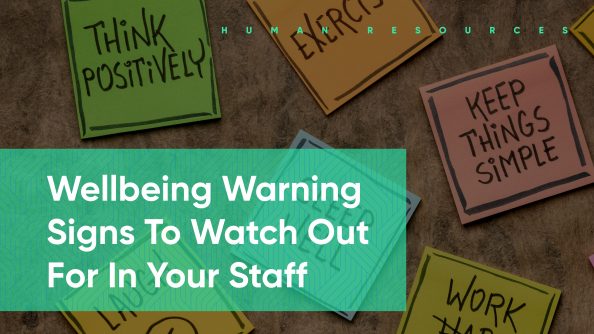Maximise Your Competitive Advantage by Drawing on Untapped Potential

- By Harri Insider Team | March 8, 2021
Hopefully, the PM’s plan to get us out of lockdown on February 22nd coupled with the good bits from the Budget on March 3rd made you want to get your reopening plans out of the cupboard. But before you dust off your existing workforce strategy, I we want to draw your attention to another important date: March 8th – International Women’s Day.
International Women’s Day is when we draw attention to the range of issues women face around the world. This year’s theme of Choose To Challenge is particularly relevant because it asks us to reflect on the ongoing challenges for women in the workplace and what more industries can do to address them.
Pre-pandemic, most industries were making steady progress to improve gender equality and diversity. The de-prioritisation of diversity issues alongside a return to women taking on more traditional gender roles during lockdown has meant the coronavirus pandemic could wipe out 25 years of improving gender equality. In the Hospitality, Leisure and Tourism industries alone research by PWC shows that a higher proportion of women (65%) have been furloughed or had their hours reduced than men (56%).
No Time for this…
Right now, it must feel difficult to lift your head out of the Urgent section of your to do list. So, the idea that you have time to think about International Women’s Day may feel laughable. But before you stop reading and bookmark this post ‘Important to be looked at after the pandemic’, ask yourself the following questions.
As a business owner, do you want to:
- Attract the broadest range of candidates to your vacancies?
- Select the best candidates?
- Keep your best staff?
- Make sure that you make best use of their talents?
If you answered yes to any of those questions – and why wouldn’t you – then making sure you remove as many as possible of the barriers that stand in the way of you having both the best women and the best men working for you and seems a bit of a no-brainer. After all, if this is a time when you are being forced to restructure to reflect your new post lockdown reality then it is surely the optimum time to ensure you factor gender and equality issues into the mix.
Getting Recruitment right
If you want to avoid sweeping up what’s left after your competitors have lured away the best people, you need to make your offer attractive to a broad pool of potential candidates, both men and women.
Why should people come and work for you?
Look at your Employer Value Proposition (EVP): does it accurately reflect the views of your current workforce? Can you personalise your offer to candidates, highlighting the strengths you have developed over lockdown including a shift towards more flexible working practices, so your organisation stands out from others as one that candidates, particularly women, might want to work for? Harri’s Talent Acquisition offers you the chance to showcase your brand as part of your wider recruitment strategy.
Making your recruitment process gender neutral
Language is a critical tool in maximising diversity in the job vacancy process. Previous studies have shown that men will apply for a vacancy if they meet 60% of the requirements for the job. Women on the other hand are unlikely to apply for a vacancy unless they meet 100% of the stated criteria.
So, while you think that a nice long list of requirements is helpful to applicants, it may be the reason a large proportion of your potential pool don’t even apply. Shorter lists of key requirements or asking for desirable but not vital requirements have been shown to increase the numbers of women applying.
Harri’s end-to-end recruitment process can help you avoid this pitfall and many of the others associated with non-cognitive bias.
The Harri pre-hiring suite offers:
- Sourcing and Application job templates, customisable by position, location, and more
- Initial screening (AQAAF) focused on non-biased behaviour-based questions and scoring
- Equal opportunity questionnaires that identify progress made at each stage of the recruitment process.
Taking these steps can help you end up with the best candidates for each post regardless of gender.
Retaining and using the best talent
Getting your recruitment right is critical right now but it is just as important to make sure you retain the good employees you have now, many of whom may be on furlough.
Focus on making sure you have the right working conditions for women as well as men.
- Women took on much of the childcare and home-schooling commitments throughout the various lockdowns and may be looking for reassurance that there will be ongoing or more flexibility in their working environment. Harri’s intelligent scheduling system enables your business to offer flexibility including shift swapping on the go through Manager and Team Member Mobile Apps.
- We are all likely to be a bit nervous of returning to work after this lockdown, but you women, tend to be more nervous than men. This is due to the fact that, especially during the pandemic, women are usually the principal carer for children and some older adults. Using Harri’s Logbook you can assure yourselves and staff that all Health and Safety guidelines are being followed every shift.
Maximising your offer for existing staff.
- Do you know who the best staff are within your organisation.Are they in the right place to make the most difference after lockdown ends? Now is the time to dig out those performance. Harri’s Sales and Labour Reports enables your team to look at how individual employee performance directly impacts on sales.
- Retention is not always only about pay. Reskilling and upskilling your workforce can motivate workers and encourage internal mobility. Use data to make sure that you are offering the right training opportunities to both men and women. This also ensures you’re not unconsciously limiting training for women to the softer skills areas.
Leadership
All industries, hospitality included, have a fair way to go to fully address the disparity between men and women in senior leadership positions. However, gender positive leadership isn’t just about numbers of women in the C suite. It can also be about the environment you foster within your organisation.
- Do people see you as an advocate for equality in your business?
- Do employees recognise the part everyone contributes to a successful team?
- Do you communicate messages of equality including through encouraging diversity training for all your staff?
- Do you listen to and learn from all your employees?
Last words
Tea Colaianni (Founder & Chair of WiHTL) believes, “this is the time to invest in diverse talent, to create sustainable outputs and to eliminate inequalities. It is not just a question of moral justice; it is a matter of competitive advantage in the face of huge adversity and uncertainty.”
Given that more than 45% of all workers in the hospitality sector are women, you shouldn’t see tackling gender equality as an add-on, but as an essential component of your back-to-normal strategy for reopening.




















